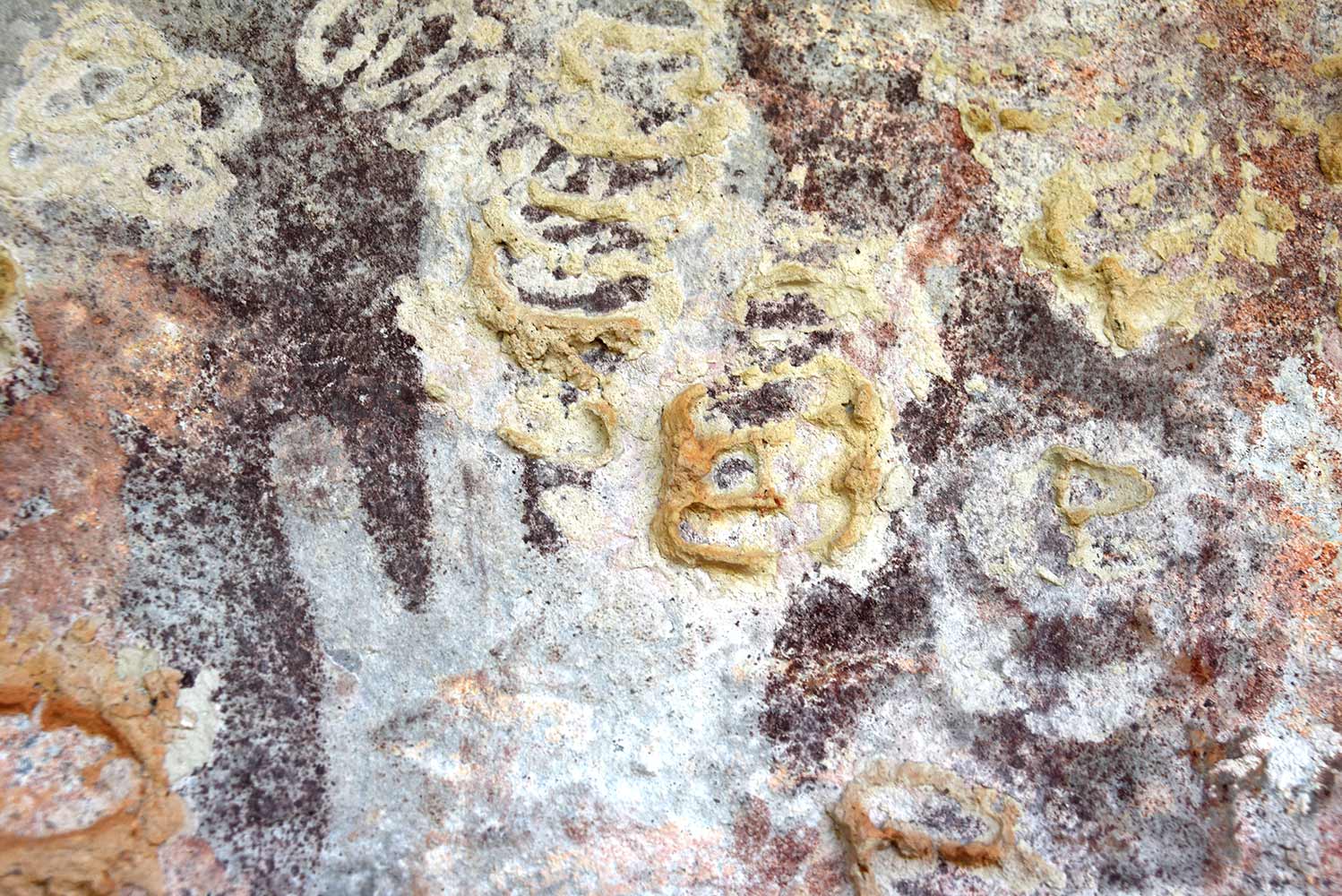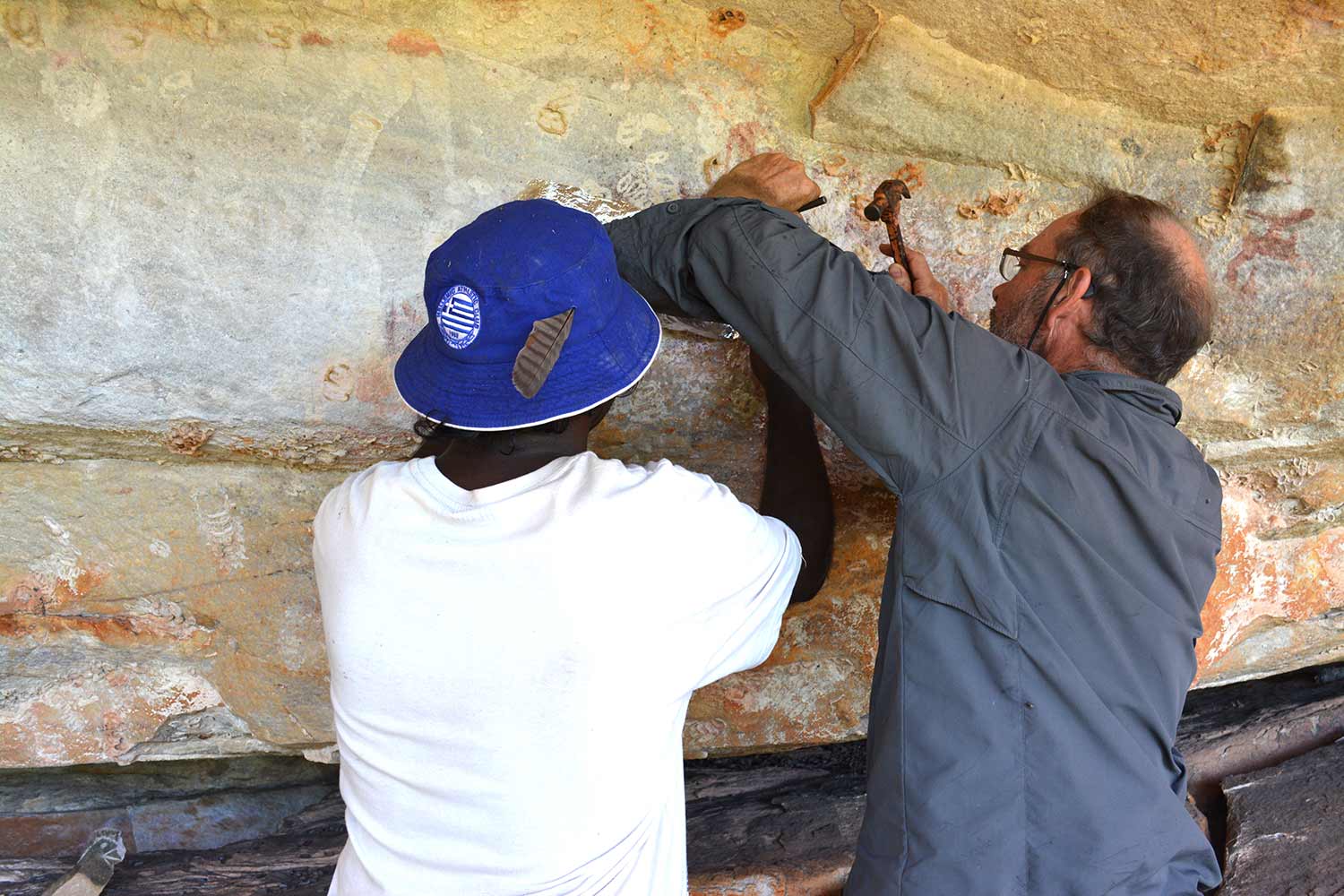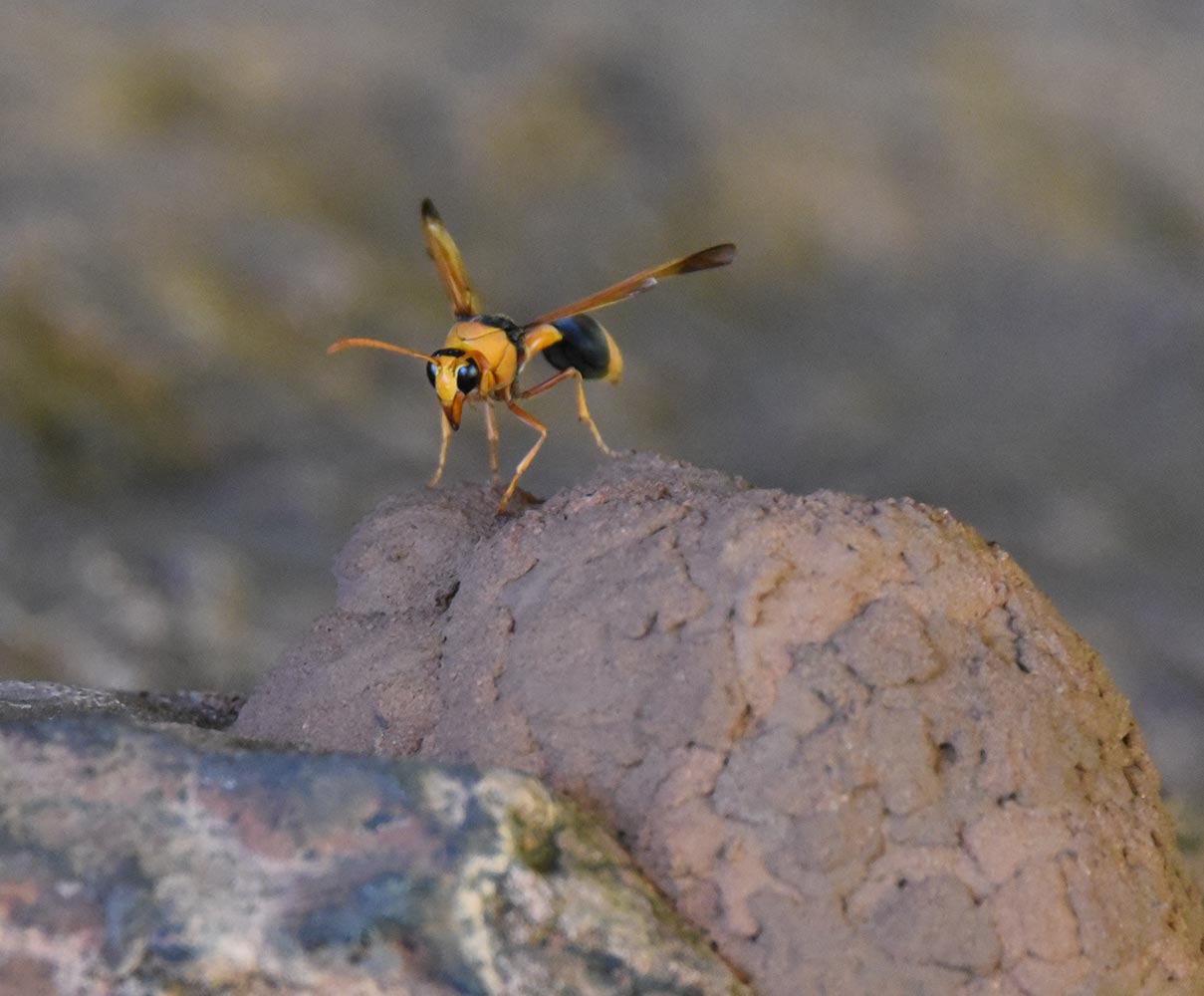How mud wasp nests help delve into our country's past
We all appreciate a warm, secure home to go to at the end of the day, and so do mud wasps. They build intricate structures from mud where they lay their eggs, giving their young a safe and comfy place to start their lives. They collect mud from a nearby source, working it into a ball or pellet with their forelegs and mandibles. Often the pellets are as big as the wasp’s head, yet they’re able to fly it to their preferred nesting site, often metres off the ground.
Mud wasp nests are useful for us, too. Archaeologists and geoscientists, along with the Traditional Owners of the region, have teamed up to develop methods for dating Aboriginal rock art found in rock shelters in the Kimberley region of north-western Australia. The basic premise is simple—if a wasp nest is found built on top of some rock art, the rock art must be older than the mud nest. Once you figure out how old the nest is, you have a minimum age for the rock art beneath it.

Observations of wasp nests in the Kakadu region in northern Australia found that many of the nests are built in dry, protected areas away from direct sunlight or water run-off. In seeking to provide a safer, more sheltered environment for their young, the wasps are also (inadvertently!) building their nests in places with optimal conditions for their long-term preservation.
In the Kimberley region, mud wasp nests can be preserved for 20 to 30 thousand years. But how can we tell that these nests are so old? There are two techniques that can be used to date mud wasps’ nests.

Optically stimulated luminescence
This method usually analyses sand grains made of minerals such as quartz. When quartz grains are buried and protected from sunlight, they absorb energy from the ionising radiation emitted by the surrounding material. As a result, extra ‘free’ electrons become trapped within their crystal structure. Upon exposure to sunlight, these electrons are expelled and they emit light (luminescence) in the process.
This happens to quartz grains within a mud pellet used by a wasp to build its nest, too. When the quartz grains are buried deep inside the nest, they are protected from sunlight, and the free electrons build up. In the laboratory, scientists can use a laser beam to expel these electrons and measure the amount of light they emit. Combined with information about the level of background radioactivity, they can determine how long the quartz grain has been protected from sunlight within the nest, which tells them how old the wasp nest is.
This method has been used to determine that some rock art in the Kimberley is more than 17 000 years old.

Radiocarbon dating
Carbon in the environment exists in a number of different forms, that is, as different isotopes. Two of these, carbon-12 (¹²C) and carbon-14 (¹⁴C), can be used to determine the ages of organic matter. The ratio of these two isotopes in every carbon-containing organism is always the same and matches that of the atmosphere. That is, until the organism dies.
¹²C is stable, but ¹⁴C is radioactive and it decays over time to nitrogen (¹⁴N). Scientists know how long it takes for this decay process to occur—in 5730 years half of the ¹⁴C carbon in a sample will have decayed to ¹⁴N. So, by comparing the amount of ¹²C to ¹⁴C in a sample, they can figure out how old it is.
Back to the wasp nests. They often contain tiny amounts of charcoal, plant material or fragments of insects, spiders and caterpillars that the parent wasps collected for the larvae to feed on. All of these things contain carbon, so the radiocarbon dating method can be applied to determine their age.
Delving into the secrets of mud wasp nests is just one of the tools being used to deepen our understanding of the Kimberley rock art and the timing of occupation of the rock shelters where it is found. The combination of scientific, archaeological and traditional knowledge is deepening our knowledge of the history of Australia’s original inhabitants, their longstanding culture and connection with our land.





